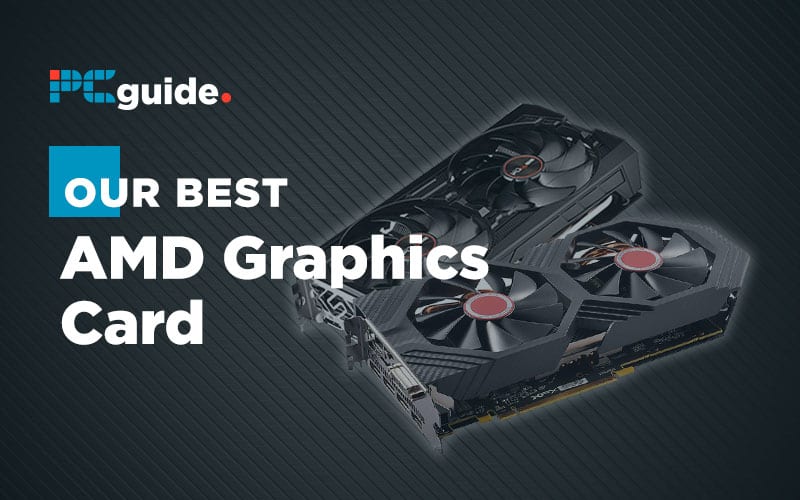In this article, we’re going to help you find the best AMD graphics card for your needs. We’ll mainly be reviewing AMD’s current lineup as 2020, but we’ll also be including the RX 580, since it still seems to have high availability and, at its lower pricing, is a strong alternative to its own successors.
This review process involved evaluating currently-available GPUs, their price-to-performance ratio, and features on offer to pick what we consider the best of each. If you still want the same GPU but want a card from a different vendor, we’ve also included links to our larger roundup articles, which will give you more cards to choose from and dive into more detail.
We’re going to do our best to cover all the information you need to know about each AMD GPU on offer. Whether you’re an expert or a novice, we’re hoping that this roundup tells you everything you need to know, but feel free to leave a comment below if you have any lingering questions.
If you somehow stumbled here on accident and would prefer to look at top Nvidia GPUs, click here.
Otherwise, let’s rock!
Table of Contents
XFX GTS XXX RX 580
The best budget AMD graphics card, when it’s available
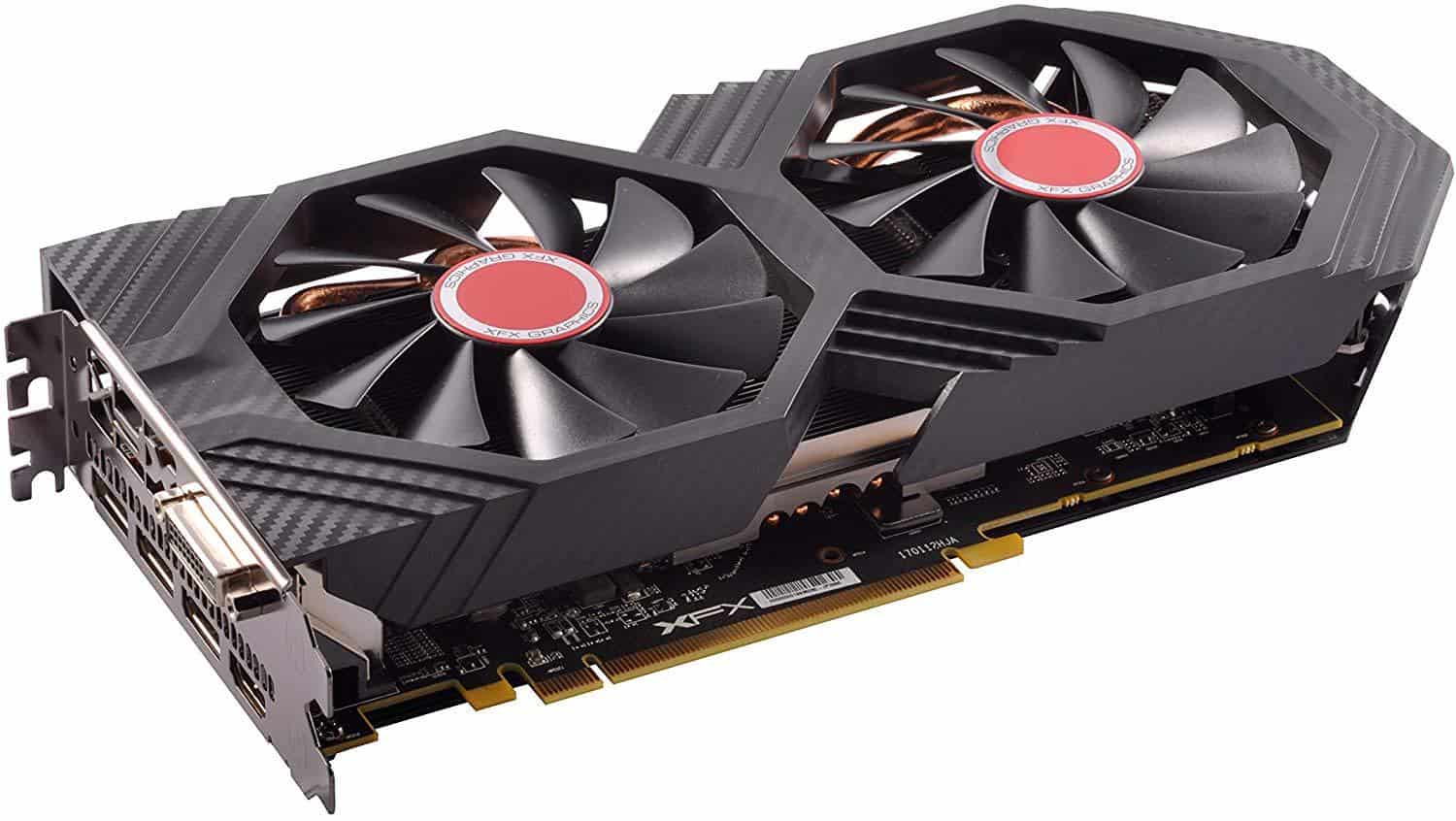
- Clock Speed: Up to 1386 MHz
- VRAM: 8GB GDDR5
- Width: 2-Slot
- Length: 355 mm
- Ports: 3 DP, 1 HDMI, 1 DVI
- Power Recommendation: 500 Watt
- The cheapest card on this list, when available
- Provides performance on par with the 5500 XT for much cheaper
- Still among the best performance-per-dollar options on the market
The AMD RX 580 is the budget graphics card that refuses to die. Nvidia has tried to kill it, and now even AMD is trying to kill it, but thanks to a plentiful stock and low prices...the 580 continues to thrive.
Technically, the RX 580 is a refresh of the RX 470. The RX 580 itself saw another refresh with the RX 590, which is also often available for under $200 despite performing on par with AMD’s new GPUs...if you can find one of those, we highly recommend it as well. (This model seems to be available often!)
How does it perform?
Pretty well, especially for its price.
The RX 580 is most compelling at 1080p, where it can turn around anything 60 to 100 FPS at high-to-max settings in most modern games. (Sans unoptimized aberrations like our eternal enemy, Assassin’s Creed: Odyssey.) The RX 590 tends to see a 10-15 FPS boost over the 580 as well, which helps it in both 1080p and 1440p gaming.
For 1440p gaming, you’ll need to lower your settings more often, especially for more intensive games. While well-optimized games like Devil May Cry 5 can turn around 60+ FPS at 1080p and max settings on this card, that isn’t the story for every game on the market. As the new console generation looms, this card will start looking much less viable for 1440p gaming.
For native 4K...you aren’t going to get much at all. You’ll need to scale from 1440p or 1800p, like the consoles do, in order to have any semblance of a playable frame rate in modern games. You’ll still need to carefully adjust your settings, too!
Click here for a look at RX 580 and RX 590 benchmarks from Eurogamer.
Ideal for what resolutions, frame rates, and settings?
Note: Some games, especially eSports titles, are much lighter than other modern games and can generally be pushed farther than these targets.
- 1080p & 100+ FPS at high-to-max settings in modern games
- 1440p & 60+ FPS at high-to-max settings in modern games
- 1800p & ~60 FPS at medium-to-high settings in modern games
- Native 4K & ~30 FPS at low-to-medium settings in modern games (not recommended)
Sapphire RX 5500 XT
The best modern budget AMD graphics card
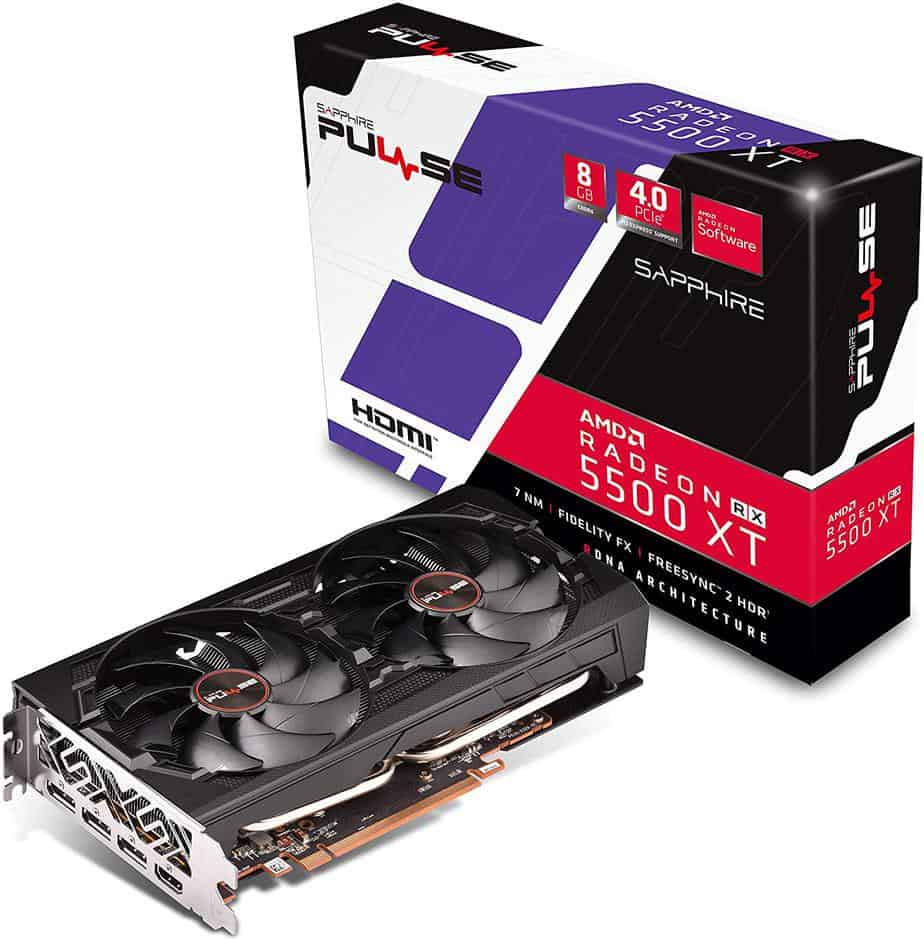
- Clock Speed: Up to 1845 MHz
- VRAM: 8GB GDDR6
- Width: 2-Slot
- Length: 233 mm
- Ports: 3 DP, 1 HDMI
- Power Recommendation: 500 Watt
- Slightly outperforms the RX 580
- Better VRAM than the RX 580 and 590
- If the 580 or 590 are cheaper, this card gets beaten easily
The RX 5500 XT is a prime example of companies eating into their own profits. The greatest rival to the RX 5500 XT isn’t any Nvidia offering: it’s AMD’s own last-gen GPUs, the RX 580 and RX 590, that are undercutting this card. Those cards turn virtually around the same (or better, in the case of the 590) performance for much less money. While their stocks will run out far sooner than this one’s, they are still quite viable alternatives at the time of writing.
How does it perform?
Pretty much the same as the RX 580. That means good 1080p performance, okay 1440p performance, and not-very-good 1800p and 4K performance.
Click here for a look at the RX 5500 XT benchmarked in modern games, courtesy of Eurogamer.
Ideal for what resolutions, frame rates, and settings?
Note: Some games, especially eSports titles, are much lighter than other modern games and can generally be pushed farther than these targets.
- 1080p & 100+ FPS at high-to-max settings in modern games
- 1440p & 60+ FPS at high-to-max settings in modern games
- 1800p & ~60 FPS at medium-to-high settings in modern games
- Native 4K & ~30 FPS at low-to-medium settings in modern games (not recommended)
Sapphire Pulse RX 5600 XT
The best AMD graphics card under $300
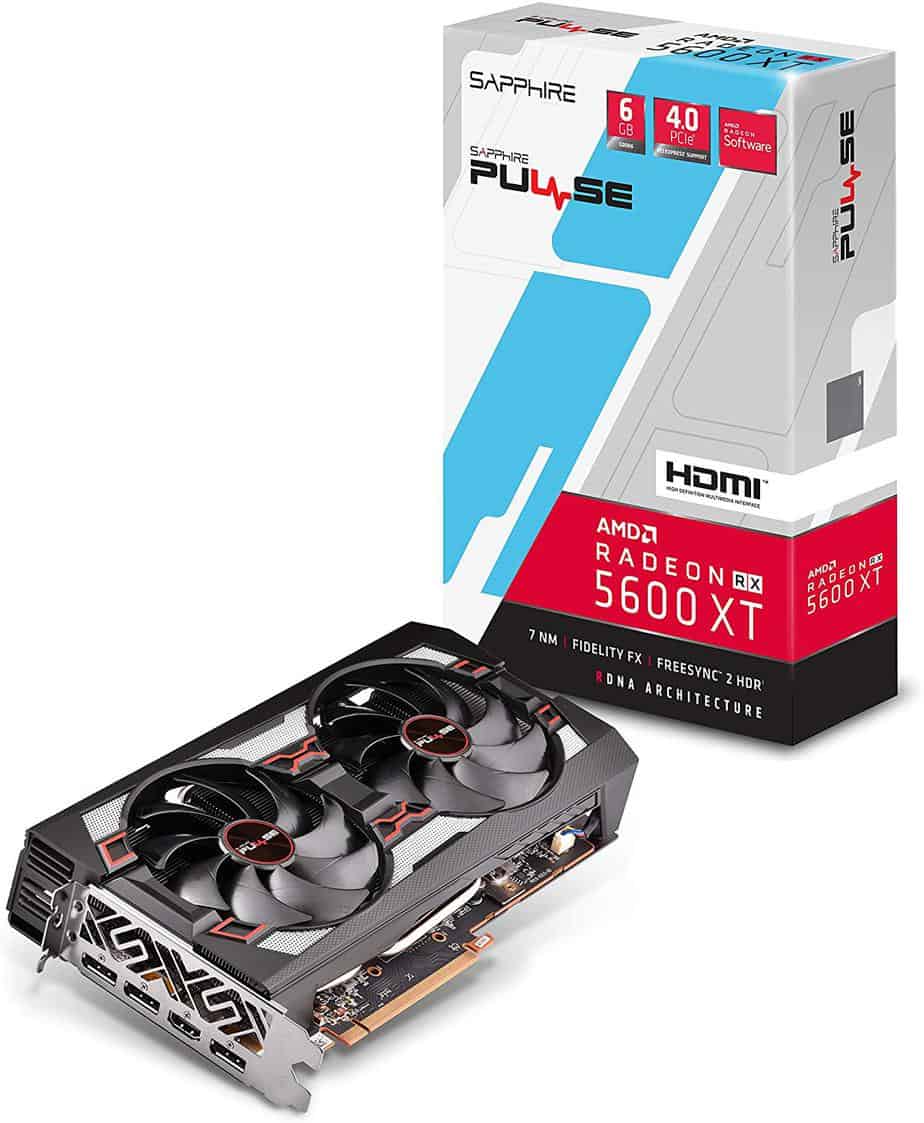
- Clock Speed: Up to 1750 MHz
- VRAM: 6GB GDDR6
- Width: 2-Slot
- Length: 254 mm
- Ports: 3 DP, 1 HDMI
- Power Recommendation: 500 Watt
- A great competitor to competing Nvidia cards, even if it cuts into the RX 5700 a little bit
- Generally well-priced
- Inconsistent VBIOs clocks and support- fortunately, we picked a model that we know supports the new VBIOs
The RX 5600 XT is a very...interesting GPU to discuss. Due to some last-minute price drops from Nvidia, and then some last-minute VBIOs tweaks from AMD, there are a lot of different RX 5600 XTs running around with dramatically different performance levels.
Fortunately for you, we’ve picked the RX 5600 XT that is best known for supporting the new VBIOs, and should ship with it pre-applied after March 2020. That’s the main benefit of the Sapphire Pulse RX 5600 XT over other models currently available: a healthy level of assurance that it will work as intended.
As far as performance goes, though...
How does it perform?
Actually pretty well. This card was originally made to compete with the 1660 Ti, and with the VBIOs update, it now performs about on par with the non-Super RTX 2060. This translates to a comfortable 120+ FPS in 1080p games at high-to-max settings, and 100+ FPS in 1440p games at the same settings.
Native 4K is where this card doesn’t look so hot, often dropping to 30 FPS or below in games at high settings. Scaling from a lower resolution (like 1800p) or turning down some settings should improve your experience, though.
Click here for RX 5600 XT performance numbers in modern games, courtesy of Eurogamer.
Ideal for what resolutions, frame rates, and settings?
Note: Some games, especially eSports titles, are much lighter than other modern games and can generally be pushed farther than these targets.
- 1080p & 120+ FPS at high-to-max settings in modern games
- 1440p & 100+ FPS at high-to-max settings in modern games
- 1800p & ~60 FPS at medium-to-high settings in modern games
- Native 4K & -30 FPS at medium settings in modern games (not recommended)
PowerColor Red Devil RX 5700
The best high-end AMD graphics card
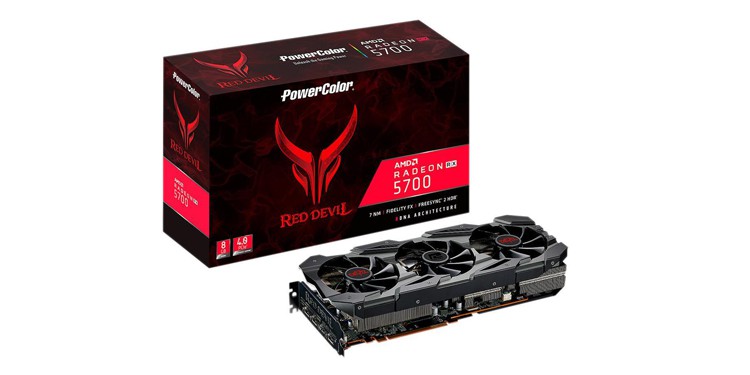
- Specs: Clock Speed: Up to 1750 MHz
- VRAM: 8GB GDDR6
- Width: 3-Slot
- Length: 300 mm
- Ports: 3 DP, 1 HDMI
- Power Recommendation: 650 Watt
- Extremely well-priced, competes well against Nvidia in the price range
- Fairly powerful
- For this card in particular, can be pushed to RX 5700 XT levels with a BIOs flash
While the RX 5700 does come dangerously close to being undercut by the RX 5600 XT, it does offer a few key benefits over that card. For one, no inconsistent VBIOs concerns! You don’t need to worry about updating the VBIOs in order to enjoy this card’s proper level of performance.
However, another boon to the RX 5700 comes from the ability to undercut yet another AMD GPU...the RX 5700 XT.
What’s this about flashing this card to an RX 5700 XT?
Now, we have to put MANY disclaimers here. For one, we aren’t responsible for anything that happens to your GPU if you try this and you mess up. Secondly, it’s important that whatever card you do this with actually supports the feature and has the power consumption/cooling capacity to back up XT levels of performance.
For detailed coverage on the fun of flashing an RX 5700 to XT levels of performance, we’ve embedded a Hardware Unboxed video below. Flashing potential is also the reason we chose the beefy Red Devil RX 5700- if you want other options, check out our 5700 roundup linked below.
https://www.youtube.com/watch?v=Kt2MUmMt31U
How does it perform?
Even if you don’t mad scientist your 5700 by turning it into a 5700 XT, you still enjoy some very good performance for the price. 140+ FPS at 1080p and max settings shouldn’t be an issue for the vast majority of modern games, and 100+ FPS at the same settings in 1440p is also well within reach. VR should also be an afterthought, performance-wise, in all but the most intensive experiences.
1800p is where you’re unlikely to push much farther than 60+ FPS, especially at high-to-max settings. Native 4K will also only reach about 30-to-40 FPS at these settings, but both 1800p and 4K can be improved by lowering graphics settings. For those on a 4K display, we recommend dropping to 1800p and then reducing settings like AA and post-processing before touching anything else.
Click here to look at RX 5700 and RX 5700 XT benchmarks from Eurogamer.
Ideal for what resolutions, frame rates, and settings?
Note: Some games, especially eSports titles, are much lighter than other modern games and can generally be pushed farther than these targets.
- 1080p & 140+ FPS at high-to-max settings in modern games
- 1440p & 100+ FPS at high-to-max settings in modern games
- 1800p & 60+ FPS at high settings in modern games
- Native 4K & 30-40 FPS at high settings in modern games
Sapphire Pulse RX 5700 XT
The best overall AMD graphics card
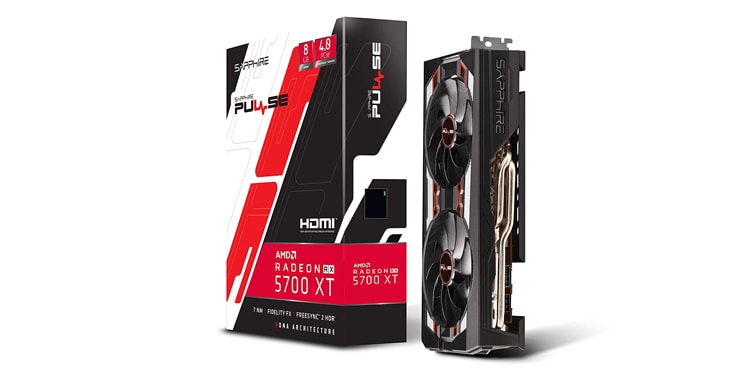
- Specs: Clock Speed: Up to 1925 MHz
- VRAM: 8GB GDDR6
- Width: 2-Slot
- Length: 254 mm
- Ports: 3 DP, 1 HDMI
- Power Recommendation: 650 Watt
- An actual RX 5700 XT!
- AMD’s current best graphics card, which competes with the 2070 Super. While it doesn’t reach the same performance peaks, it’s much better performance-per-dollar!
And finally we’ve arrived to AMD’s best, at the time of writing.
The RX 5700 XT is AMD’s highest-end GPU, built as a competitor to the RTX 2070 Super. This TechSpot benchmark run is still one of our favorites for how thoroughly it tackles this match-up, and we highly recommend looking it over for an idea of how beastly this card is for its price.
How does it perform?
On average, this card is 6% slower than the 2070 Super at 1440p and 9% slower at 4K. While that sounds like a negative, it really isn’t, since this card is also 20% cheaper!
At 1080p, this card is complete overkill. Pushing 200+ FPS shouldn’t be an issue at this price range, even at high or max settings.
For 1440p, 100+ FPS should be well within reach, even at high-to-max settings. Native 4K is even playable at 60+ FPS in some games, but you’ll more than likely need to turn down some settings for a truly stable experience. (As always, 1800p comes in handy here.)
Click here to look at RX 5700 and RX 5700 XT benchmarks from Eurogamer.
Ideal for what resolutions, frame rates, and settings?
Note: Some games, especially eSports titles, are much lighter than other modern games and can generally be pushed farther than these targets.
- 1080p & 200+ FPS at high-to-max settings in modern games
- 1440p & 100+ FPS at high-to-max settings in modern games
- 1800p & 60+ FPS at high-to-max settings in modern games
- Native 4K & ~60 FPS at high settings in modern games (adjustments recommended)
Choosing the right AMD GPU for your system
While we’ve covered the performance of each individual AMD GPU highlighted above, there are a few other compatibility concerns and FAQs we’d like to cover here.
First and foremost, let’s talk physical compatibility.
Width
Width is measured in the number of PCI slots taken up by the graphics card on both your motherboard and chassis. The average width for most graphics cards is 2 slots, but some particularly beefy cards can come in at 3 slots. A few fall somewhere between that, though those are still (in effect) 3-slot cards since they still obscure the next slot down.
Unless you’re in a very space-constrained Mini ITX or HTPC chassis, GPU width is unlikely to cause an issue. Few consumers use more than one expansion card in today’s PC market, but for those who do, keeping graphics card width in mind is important information before buying.
Length
Length is the much more prominent measurement when it comes to concerns of GPU compatibility, and that’s because a long GPU is less likely to fit in your system than a thick one. The standard for GPU length is measured in millimeters (mm), and measures the longest side of the graphics card.
We’ve included this specification for each of our GPU picks so that you can double-check whether or not the card will fit in your system before buying. For many high-performance cards with beefy coolers, this is especially important to verify. If you aren’t sure what the maximum GPU length your case can support is, look it up on your manufacturer’s site or measure it yourself.
While you can return an incompatible GPU when it arrives, we imagine you’d rather buy one that fits in the first place. So double-check before buying!
Power Requirements
The power requirements provided by manufacturers are more like recommendations, especially for modern, low-power systems. If you want to keep it safe and don’t feel like doing wattage calculation, then stick with the recommendations.
If you want to save some money while also ensuring that your PC will be safely operating with your power supply, use a PSU wattage calculator in order to tally the power draw of your components. So long as they don’t exceed PSU capacity, you’re good- but more room to breathe for your PSU is always better.
What difference does VRAM amount and type make?
So there are a lot of different VRAM types and capacities being thrown around in this article.
VRAM has a high impact on maximum texture detail and resolution that your graphics card can output. This is determined by both the speed of the VRAM and the quantity of the VRAM. GDDR5 VRAM, used by the RX 580, isn’t as fast as GDDR6. However, the sheer quantity- 8GB- makes it appropriate for 1440p and even 4K with older games, so long as settings are kept in check.
GDDR6 VRAM can achieve the same or better results with less total VRAM. If you have 6GB+ of GDDR6 VRAM, you’re unlikely to ever be VRAM-constrained…but you’ll still be held back by the raw power of the rest of your GPU, which may not be able to keep up with games at super high settings or resolutions.
If you end up being tempted by something like a last-gen RX 570, a different RX 580, or even an RX 590…make sure that you get the 8GB models! The 4GB models perform pretty much the same in 1080p, but your 1440p and higher resolution gaming will suffer as a result of VRAM constraints.
A brief note on video ports
You’ll notice a few different video ports supported by each of these graphics cards. Here’s what sets them apart:
- DVI – Oldest standard supported by modern GPUs, limited to 1080p at 144 Hz or 1440p at 60 Hz. Cannot do higher resolutions, and does not pass through sound.
- HDMI – Most common HD video standard for TVs and other consumer electronics. Supports 4K @ 60 Hz, but support of lower resolutions at higher frame rates will vary, especially for resolutions like 1440p. We recommend only using HDMI with 1080p and 4K resolutions, and only when used with a TV. This standard does offer audio pass-through.
- DisplayPort – Offers the highest bandwidth and most flexible support for PC resolutions and refresh rates. The PC display standard. Recommended for use with your PC monitor, especially for high-refresh gaming. This standard also offers audio pass-through, but is not compatible with most TVs.
Why all the Sapphire cards?
Like with EVGA in the Nvidia roundup we did, Sapphire simply offers some of the best options when it comes to AMD graphics cards. We didn’t make our picks based on the brand name- we evaluated reviews, pricing, and availability before making any selections.
Sapphire’s Pulse cards simply come out on top more frequently than others do when making those comparisons. Fortunately, we have larger articles with more choices for you to pick from for each GPU, should Sapphire not satisfy you for whatever reason.
